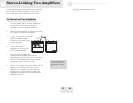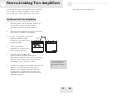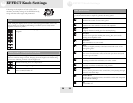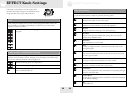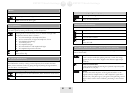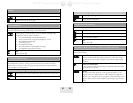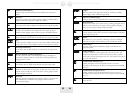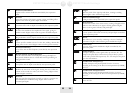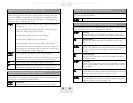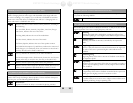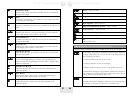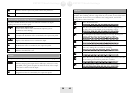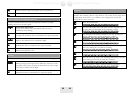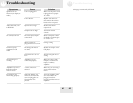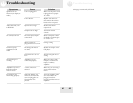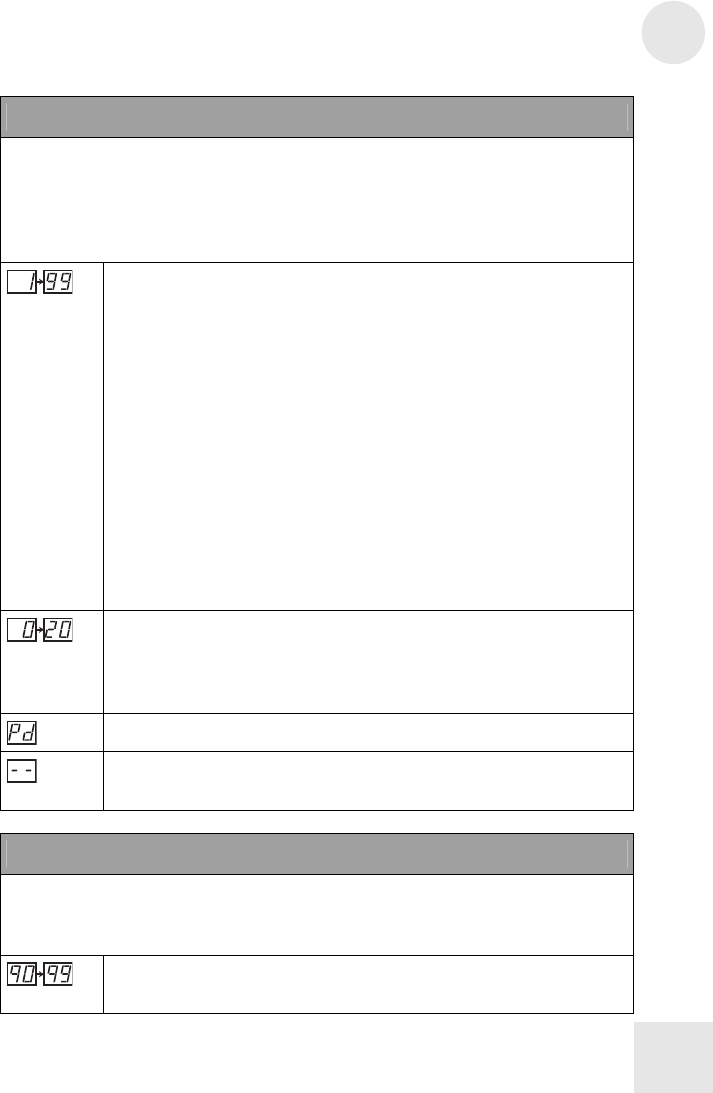
EFFECT Knob Settings 10
35
PARAM (Direct-Control Parameter for FX1)
This parameter modifies the operation of the effect selected for the FX1
module. Changing between effect types with dissimilar value ranges will scale
this value accordingly. For example, if you set Phaser to PARAM=63 and then
switch to the Auto Wah effect, its PARAM value will be 12. Changing back to
Phaser will result in a PARAM value of 63.
Indicates the value of FX1’s direct-control parameter, according to
the following:
For Auto Wah, Phaser, Tremolo, Step Filter, Auto Pan, Flanger
and Chorus, indicates the rate of the effect.
For Ring Mod, indicates the rate of the modulation.
For Slow Attack, indicates the rate of the attack.
For Rotary Speaker, indicates the rate of the speaker rotation.
For Pedal Pitch Transpose Up and Down, indicates the amount of
pitch change in 1/4 semitones (from 1/4 semitone to more than 2
octaves). Wet/dry mix is fixed at 100% wet.
For Cry, indicates the sensitivity of the filter modulation.
For Pitch Transpose with a fixed interval, denotes the wet/dry mix
from 0 (100% dry) to 10 (50% wet, 50% dry) to 20 (100% wet).
Indicates that the expression pedal controls the parameter.
Indicates that the effect assigned to the FX1 module does not have
a direct-control parameter (like Pedal Wah) or that FX1 is off.
FX2 (Multi-Effect Module 2, Stereo Effects)
This module gives you a choice of stereo effects. These effects include all those
found in FX1 except for Flanger, Rotary Speaker, Chorus and Pitch Transpose.
FX2 also gives you the following additional effect.
Auto Phaser
A phaser for which the delay is controlled by playing intensity.
10 EFFECT Knob Settings
36
PARAM (Direct-Control Parameter for FX2)
These parameters work exactly the same way as the direct-control parameter for
FX1, with the following addition.
For Auto Phaser, indicates the rate of the effect.
FX3 (Multi-Effect Module 3, Delay-Based Effects)
This module gives you a choice of delay-based effects. A delay is an echo of the
original signal that can occur at varying frequency and time.
Doubling
Doubles the signal with a slight delay, creating the effect of two
instruments playing at once. Higher values indicate higher intensity.
Pedal Doubling
Doubling effect with its intensity controlled by the expression
pedal.
Ping Pong Delay
Creates a delay that bounces back and forth between the right and
left sides of the stereo spectrum. Higher values indicate more
feedback.
Pedal Ping Pong
Ping Pong Delay effect with its amount of feedback controlled by
the expression pedal.
Tape Delay
Emulates the retro tape-delay effect that was created by recording a
signal to tape and playing it back as a delay. Higher values indicate
more feedback.
Pedal Tape Delay
A Tape Delay effect with its feedback controlled by the expression
pedal; great for singling out notes or sections to echo.
Stereo Delay
A standard delay that occurs in stereo. Higher values indicate more
feedback, producing a longer-repeating echo.



